AI-Powered Greenhouse Climate Control Trends 2025
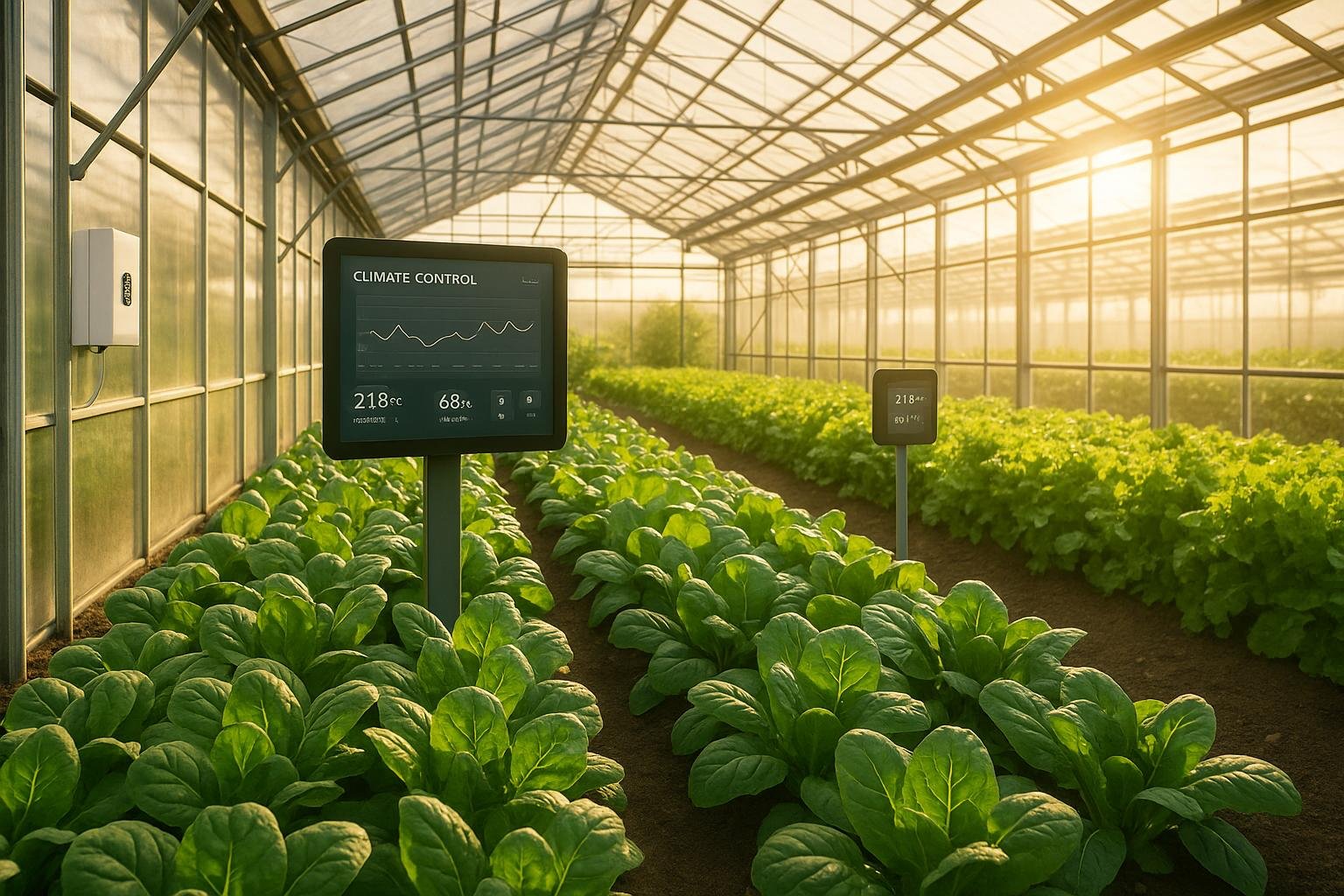
In 2025, artificial intelligence (AI) has become a game-changer for greenhouse climate control, transforming how growers manage crops. These systems use data from sensors, weather forecasts, and historical trends to create precise, real-time adjustments. The result? Better crop health, reduced energy and water use, and lower costs.
Key Takeaways:
- AI Systems: Predict plant needs with algorithms, reducing waste and improving efficiency.
- IoT Sensors: Provide real-time data on temperature, humidity, and light for smarter decisions.
- Digital Twins: Simulate greenhouse conditions to test changes without risks.
- Energy Savings: AI optimizes HVAC, lighting, and irrigation to cut costs while maintaining ideal conditions.
- Seasonal & Crop-Specific Adjustments: Tailors climate strategies to different plants and growth stages.
AI is reshaping greenhouse operations, making them smarter, more efficient, and ready for future challenges.
[AUDIO only] Office Hours LIVE Ep 134: Integrated HVAC Systems with Willy Stober

Key AI Technologies in Greenhouse Climate Control for 2025
Greenhouse climate control is undergoing a transformation, powered by AI technologies that bring precision and smarter decision-making to the forefront. Three standout innovations are shaping this space, making climate regulation more efficient and reliable.
Predictive Climate Algorithms
At the heart of modern greenhouse management are predictive climate algorithms. These systems analyze a mix of data - weather forecasts, seasonal trends, soil conditions, and historical records - to anticipate climate changes. By spotting patterns, they enable proactive adjustments, such as fine-tuning heating, cooling, or ventilation systems to shield crops from stress. Over time, these algorithms improve through iterative updates, ensuring consistent crop quality while optimizing energy use. The addition of real-time IoT data further sharpens these predictions, making them even more actionable.
IoT Integration for Real-Time Data Collection
IoT sensors play a critical role in providing the real-time data that AI systems need to manage greenhouse climates effectively. These sensors track vital parameters like temperature, humidity, CO₂ levels, light intensity, and soil moisture, delivering constant updates to the AI. With this live data, the system can swiftly adjust environmental settings to maintain ideal growing conditions. When paired with external weather data, this integration creates a robust system that adapts to changing circumstances. Additionally, digital twin simulations use this sensor data to test potential adjustments in a virtual environment before applying them in the greenhouse.
Digital Twin Simulations
Digital twin simulations offer a cutting-edge way to experiment with climate strategies. These virtual models replicate the greenhouse environment in real time, using data from IoT sensors to mirror current conditions. Growers can test how changes to temperature, humidity, ventilation, and other factors might impact their crops without taking risks in the actual greenhouse. As these simulations continuously incorporate new data, they become more precise, helping growers prepare for unexpected challenges and fine-tune resource usage for maximum efficiency.
Energy-Efficient Climate Control Solutions
AI is reshaping the way greenhouses operate, turning them into more energy-conscious and efficient systems. By carefully aligning plant care with energy-saving techniques, growers can cut costs while maintaining the ideal environment for crops. Let’s explore how AI-driven innovations are making this possible.
AI-Optimized HVAC and Ventilation Systems
AI is revolutionizing HVAC systems by transforming them into adaptive networks. These systems continuously monitor factors like temperature, humidity, and external weather conditions to fine-tune climate control strategies.
For instance, AI-powered ventilation algorithms determine when natural airflow can replace mechanical systems, leading to noticeable energy savings. In larger greenhouses, zoned climate control and predictive shading come into play. These technologies create localized microclimates and adjust shading based on solar forecasts, ensuring maximum efficiency.
Adaptive Lighting Technologies
AI isn’t just improving HVAC systems - it’s also making greenhouse lighting smarter. AI-controlled LED grow lights adjust light spectrums to match the specific growth stages of plants and current ambient conditions. Instead of sticking to rigid on-off schedules, these systems use dynamic spectral tuning for more precise energy use.
Daylight integration algorithms add another layer of efficiency. By monitoring natural light levels, these systems increase or decrease artificial lighting as needed. When sunlight is low, LEDs brighten gradually, and when sunlight is abundant, they dim to save energy.
Spectrum optimization further customizes light wavelengths to meet the needs of different crops and growth phases. Heat management also plays a role, as lighting is synchronized with cooler times of the day to maintain a stable environment without overloading HVAC systems.
Resource Allocation and Sustainability
AI extends energy efficiency beyond individual components, optimizing the entire greenhouse operation. By detecting inefficiencies and reallocating resources in real time, these systems cut waste and improve sustainability.
Load balancing and demand response programs allow greenhouses to adjust energy use during peak utility hours, often earning financial incentives. For example, AI can temporarily tweak climate settings or shift lighting schedules to reduce energy consumption without compromising plant health.
Waste heat recovery is another innovation. Heat generated by LED lights or other equipment is captured and reused to warm cooler areas or preheat incoming air, cutting down on heating costs during colder months.
AI also integrates water and energy management, ensuring irrigation schedules align with climate control needs to avoid unnecessary energy use. On top of that, carbon footprint optimization prioritizes renewable energy and schedules high-energy tasks during off-peak hours, delivering measurable environmental benefits. These strategies not only lower costs but also move greenhouses closer to a more sustainable future.
sbb-itb-4d6a8dd
🚀 Ready to Reinvent Your Garden?
Join thousands of homeowners who have transformed their gardens using our AI design tool. Upload one photo to explore endless possibilities.
Get your AI garden designs →Seasonal and Crop-Specific AI Adjustments
AI technology is becoming increasingly adept at fine-tuning greenhouse climate control to meet the distinct needs of different crops and seasons. Instead of relying on a generic approach, today’s systems adapt dynamically to seasonal changes and the specific requirements of various plants.
Seasonal Climate Control Automation
Modern AI-powered greenhouse systems automatically respond to shifts in temperature, daylight, and humidity. During hot months, these systems prioritize cooling and ventilation while carefully managing misting schedules to counteract high evaporation rates. In colder months, they ramp up heating and use artificial lighting to compensate for shorter daylight hours. Transitional periods, like spring and fall, are handled with gradual adjustments to help plants adapt smoothly. Additionally, regional climate differences across the U.S. are considered, allowing these systems to fine-tune settings based on local environmental conditions.
Crop-Tailored Climate Strategies
Beyond seasonal adjustments, AI takes customization a step further by optimizing conditions for specific crops. For example, leafy greens flourish in cooler, more humid environments, while fruiting plants thrive with warmer temperatures and balanced moisture levels. Herbs, on the other hand, require precise tweaks in water and temperature to enhance their flavor. Advanced systems even create micro-environments within a single greenhouse, ensuring that seedlings and mature plants coexist under conditions tailored to their growth stages.
Personalized Recommendations for Growers
AI platforms don’t just automate climate control - they also offer personalized insights to help growers achieve better yields and higher profitability. By analyzing local weather patterns, energy costs, and crop performance, these systems provide actionable advice. This might include customized planting schedules based on regional trends or strategies to optimize energy use. They also enable proactive maintenance, reducing the risk of equipment failures.
For outdoor growers, tools like AIGardenPlanner extend AI’s capabilities. These platforms help visualize and plan outdoor gardens, offering plant recommendations tailored to the user’s location and climate. Together, these innovations are transforming both greenhouse operations and outdoor gardening, making it easier than ever for growers to succeed.
Future Trends in AI Climate Control Systems
The greenhouse industry is on the brink of a major shift. AI climate control systems are no longer just about automation - they’re evolving into unified ecosystems that are smarter, more responsive, and better at improving overall efficiency. These emerging trends build on the advancements we’ve already seen, pushing the industry toward deeper integration and greater autonomy.
Integration with Other Technologies
AI climate control systems are increasingly working hand-in-hand with other cutting-edge technologies like IoT and digital twins. But now, they’re also connecting with robotics and inventory management tools. For example, these systems can link climate data with robotic harvesting machines, automated irrigation setups, and digital inventory platforms. This kind of integration allows greenhouses to fine-tune their operations - like adjusting irrigation based on real-time moisture levels or coordinating robots for more accurate crop handling. The result? Streamlined workflows and improved resource management.
Human-in-the-Loop AI Systems
Even as automation becomes more advanced, human expertise remains a key part of the equation. AI systems are designed to work alongside growers, allowing for human oversight and intervention when needed. For instance, growers can validate critical adjustments when local conditions demand a more nuanced approach. Many systems now offer customizable alerts and feedback loops, so they can learn and adapt based on user input. This collaboration between AI and human knowledge ensures greenhouse operations stay reliable, safe, and flexible.
The Path to Fully Autonomous Greenhouses
The future of greenhouses points toward full autonomy - where systems manage climate control, irrigation, and crop care without human involvement. Advances in machine learning, edge computing, and predictive maintenance are paving the way for this vision. While we’re not quite there yet, these technologies are setting the stage for greenhouses that operate with incredible efficiency and consistency, all while minimizing the need for hands-on management.
Conclusion: AI's Impact on Greenhouse Climate Control
By 2025, AI-powered climate control has moved from a cutting-edge concept to a vital part of modern greenhouse operations. These systems represent a transformative shift in how growers manage crops, conserve resources, and address environmental challenges. They create controlled environments that are smarter and more efficient than ever before.
Key Takeaways for Growers and Enthusiasts
One standout benefit of AI-driven climate control is its ability to juggle multiple variables at once. These systems work to balance environmental factors - like temperature, humidity, and light - creating optimal conditions for plant growth. The result? Healthier crops and more consistent yields.
Energy efficiency is another major win. AI systems learn from data over time, spotting patterns that help reduce energy use without sacrificing plant health. Many growers report noticeable energy savings shortly after adopting these technologies.
For those managing a variety of crops or navigating unpredictable seasonal changes, AI systems offer a tailored approach. They can store specific climate strategies for different crops and growth stages, taking much of the guesswork out of greenhouse management.
Even garden enthusiasts and landscapers can benefit from understanding how AI optimizes plant care. Tools like AIGardenPlanner make it easier to design gardens that thrive by aligning with local conditions and natural climate patterns.
Looking ahead, these efficiencies are just the beginning. The next wave of AI systems promises even greater autonomy and smarter integration.
Looking Ahead to a Smarter Greenhouse Future
The future of greenhouse technology will combine AI with advanced edge computing for faster, more reliable operations. By processing environmental data locally, these systems can react more quickly and operate independently of external networks. This means smarter, more resilient decision-making even in challenging conditions.
As unpredictable weather becomes more common, climate resilience is becoming a top priority. AI platforms are being designed to predict and respond to extreme conditions, ensuring steady crop production despite environmental hurdles.
Beyond individual greenhouses, AI technology is set to integrate with broader agricultural networks. This connectivity will help optimize resource use on a regional and global scale, contributing valuable insights to food security initiatives.
AI has redefined greenhouse management by improving precision, boosting energy efficiency, and preparing growers for future challenges. By 2025, these systems are no longer just an advantage - they’re a necessity. Embracing AI technology positions growers to meet the rising demand for sustainable food production while staying adaptable to the uncertainties ahead.
FAQs
How do AI-powered systems use IoT sensors and digital twins to optimize greenhouse climate control?
AI-powered systems use IoT sensors to keep a close eye on critical factors like temperature, humidity, and CO2 levels, delivering real-time data. This information helps growers make precise adjustments to create the perfect environment for plants to thrive.
Meanwhile, digital twins act as virtual models of the greenhouse. They can simulate different scenarios and predict outcomes, allowing growers to experiment with and refine climate control strategies without affecting the actual greenhouse.
When IoT sensors and digital twins work together, they create a powerful system that boosts efficiency, cuts down on energy use, and maintains the best conditions for plant growth. This combination is set to make greenhouse operations more productive and energy-conscious by 2025.
What are the main advantages of using AI-powered HVAC and lighting systems in greenhouses?
AI-powered HVAC and lighting systems offer a range of benefits for greenhouse operations. They can cut energy use by an impressive 25–40%, helping to lower greenhouse gas emissions and improve energy efficiency.
These systems also create optimal climate conditions, which support healthier plant growth and consistent yields. On top of that, they enable predictive maintenance, reducing the risk of expensive equipment breakdowns. By streamlining operations and minimizing environmental impact, these AI-driven solutions make greenhouse management both more economical and environmentally conscious.
How does AI adapt greenhouse climate control to specific crops and changing seasons?
AI is transforming greenhouse climate control by using data to fine-tune conditions such as temperature, humidity, and CO2 levels for different crops. Through advanced algorithms, it adjusts these factors to meet the specific requirements of each plant while accounting for seasonal changes.
This approach creates the perfect growing environment year-round, leading to better crop yields, smarter use of resources, and greater adaptability to shifting environmental conditions. By customizing strategies for individual plants and changing seasons, AI empowers farmers to consistently produce high-quality crops.
🎨 Visualize Your Dream Garden Today!
Transform any outdoor space into a professional landscape design in minutes. Just upload a photo, choose your style, and let our AI do the rest.
Start your garden transformation now →Related posts
Related Articles

How Machine Learning Models Forecast Plant Growth
Explore how machine learning revolutionizes plant growth predictions, optimizing resources and improving yields for farmers and gardeners alike.
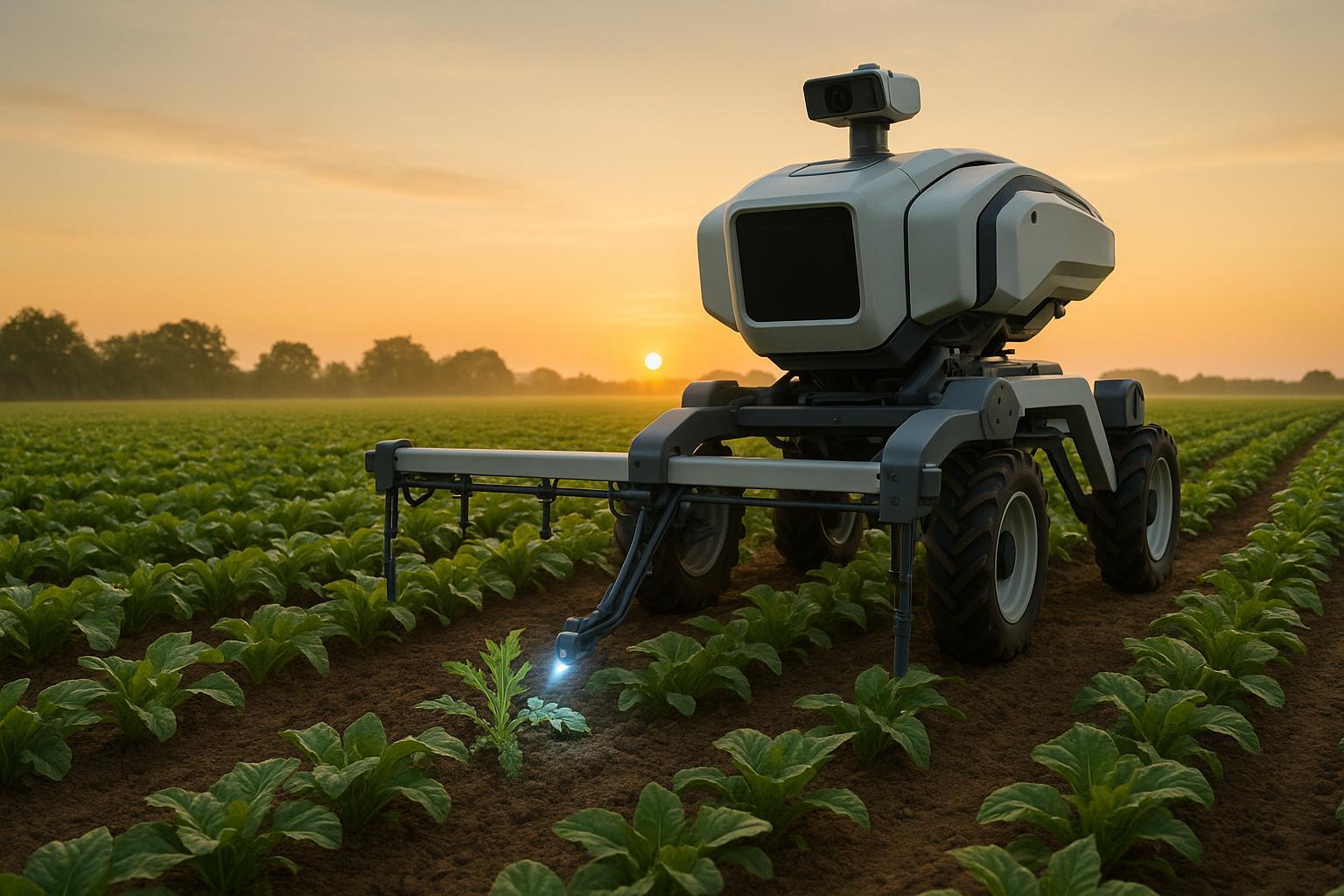
Designing Interfaces for AI Weed Control Systems
Explore how user-friendly design principles in AI weed control systems enhance efficiency, reduce costs, and transform modern agriculture.
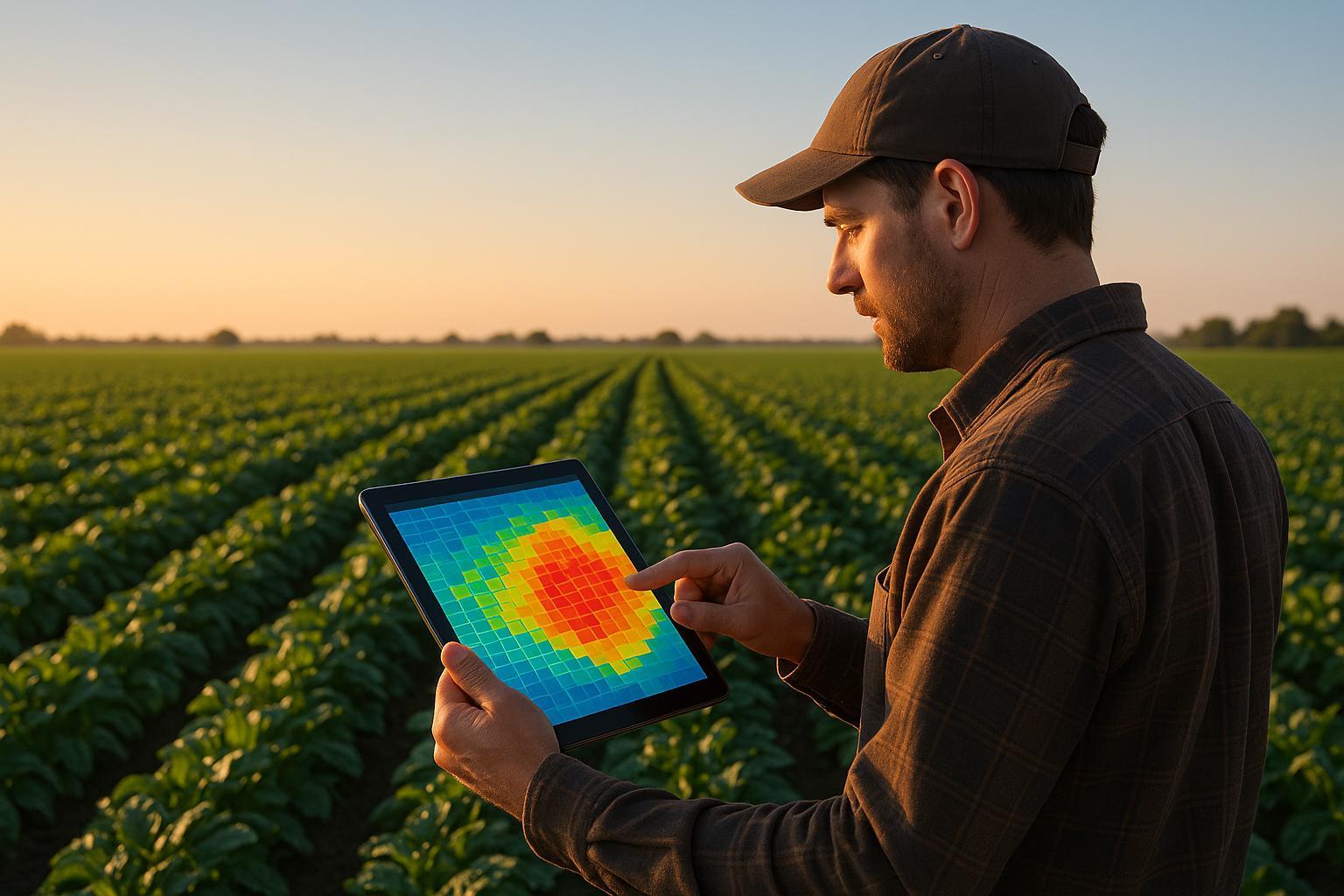
Growing Degree Days: AI's Role in Pest Control Timing
Explore how AI and Growing Degree Days enhance pest control timing, reducing pesticide use and increasing crop yields for sustainable agriculture.
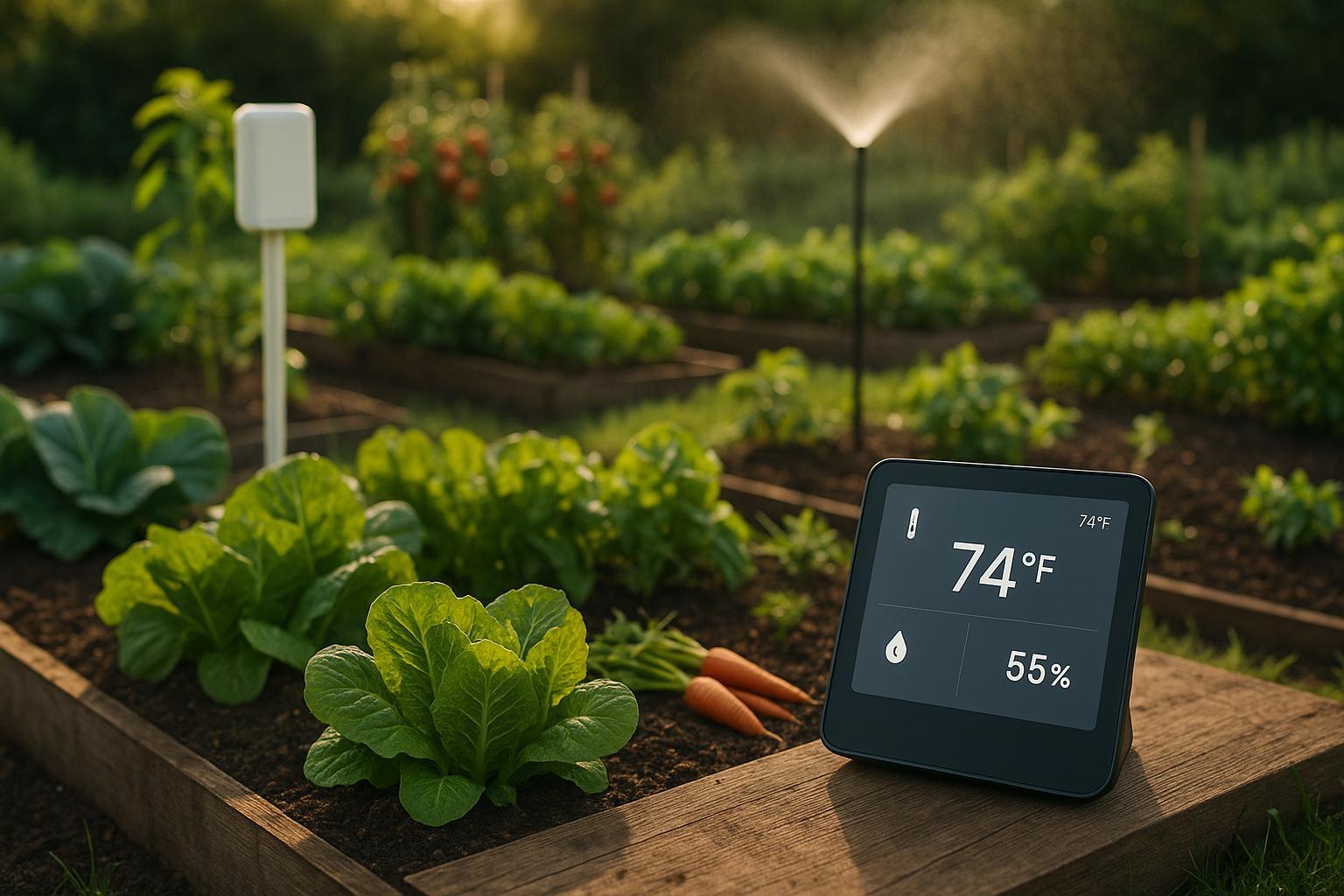
How Remote Climate Control Boosts Garden Productivity
Explore how remote climate control systems enhance garden productivity through automation, yielding higher returns and resource efficiency.
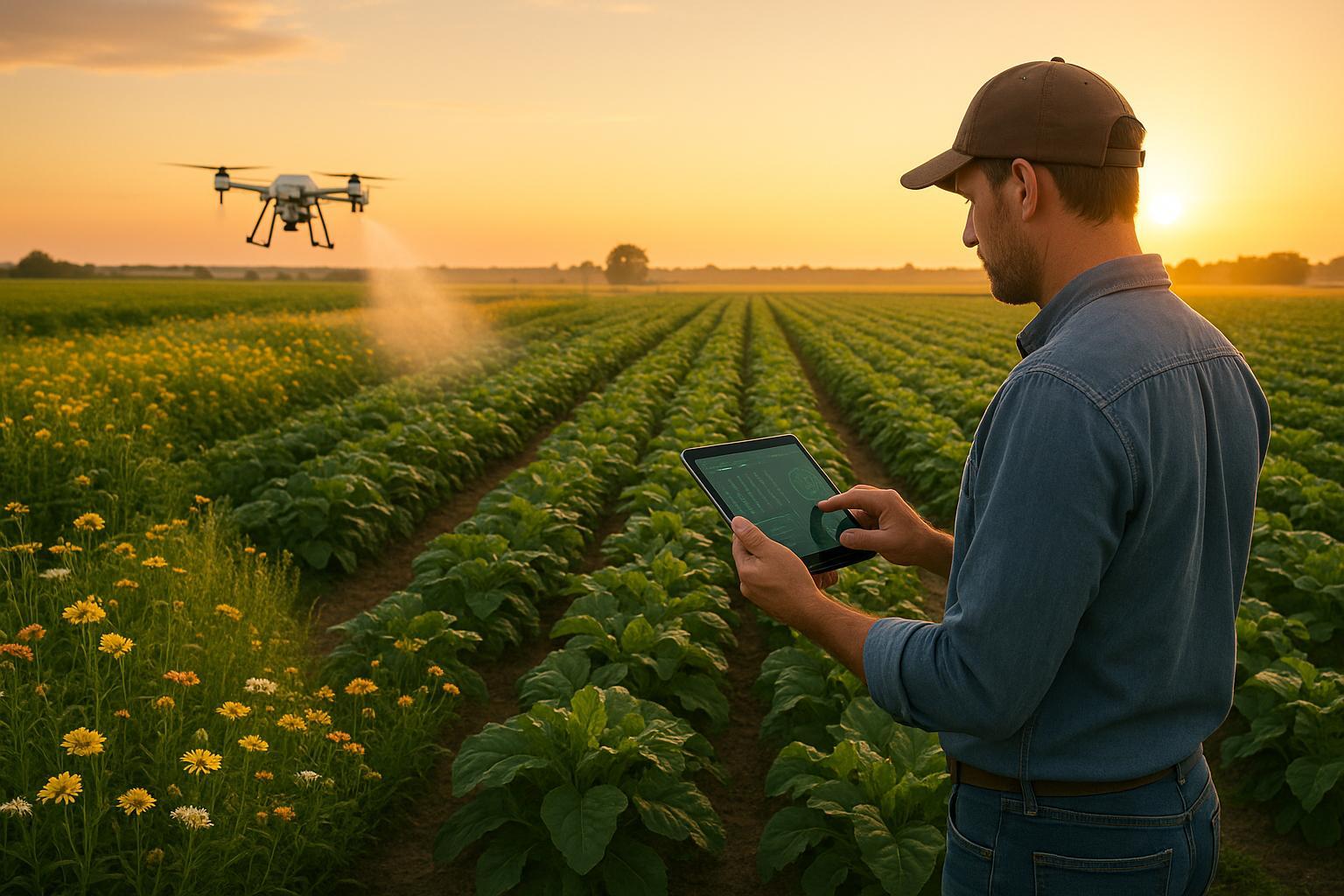
AI in Pest Control: Biological and Chemical Integration
Explore how AI is revolutionizing pest control by integrating biological and chemical methods for more efficient, sustainable farming.
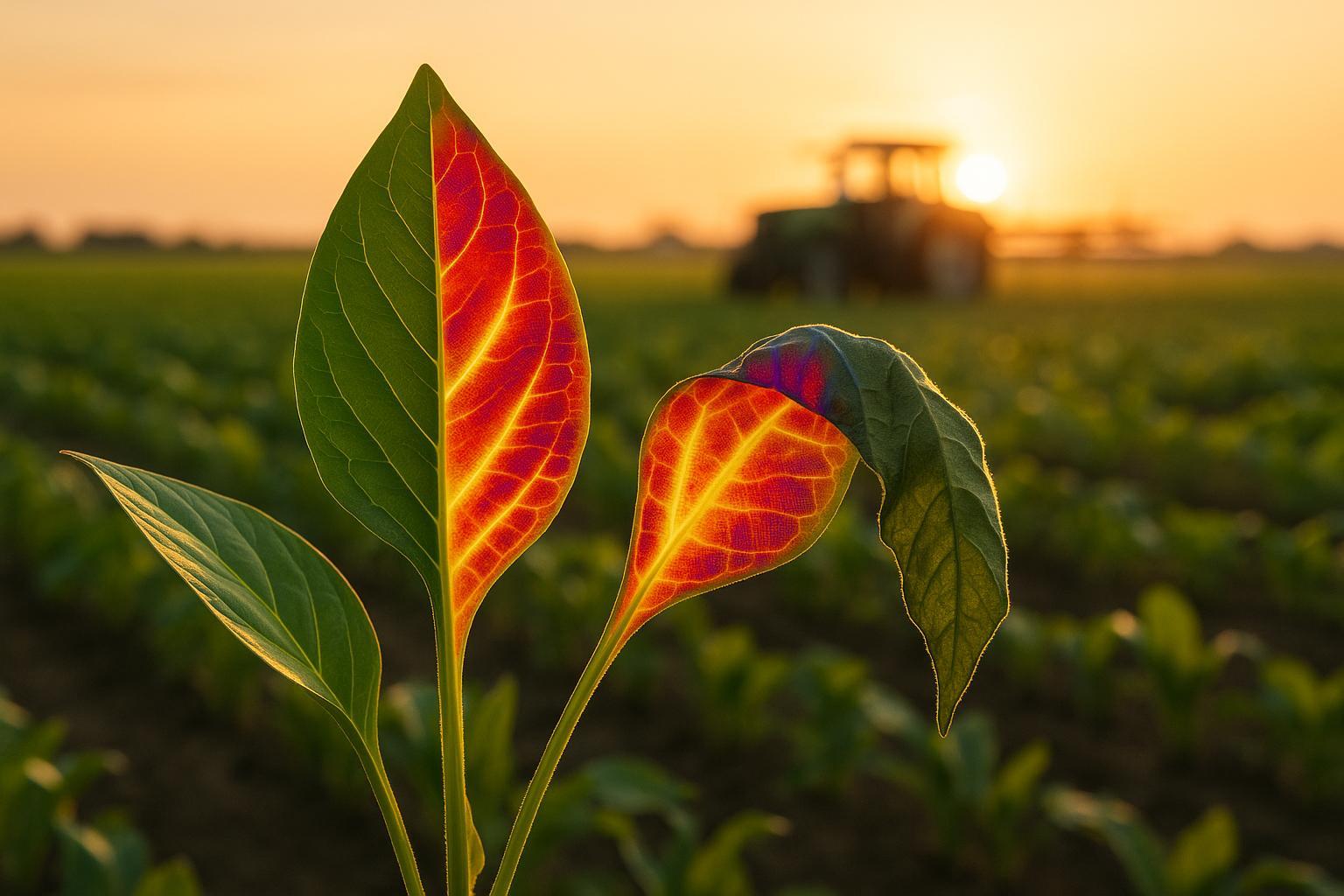
Infrared Imaging for AI Plant Stress Detection
Explore how infrared imaging and AI revolutionize plant stress detection, enabling early interventions and smarter farming practices.